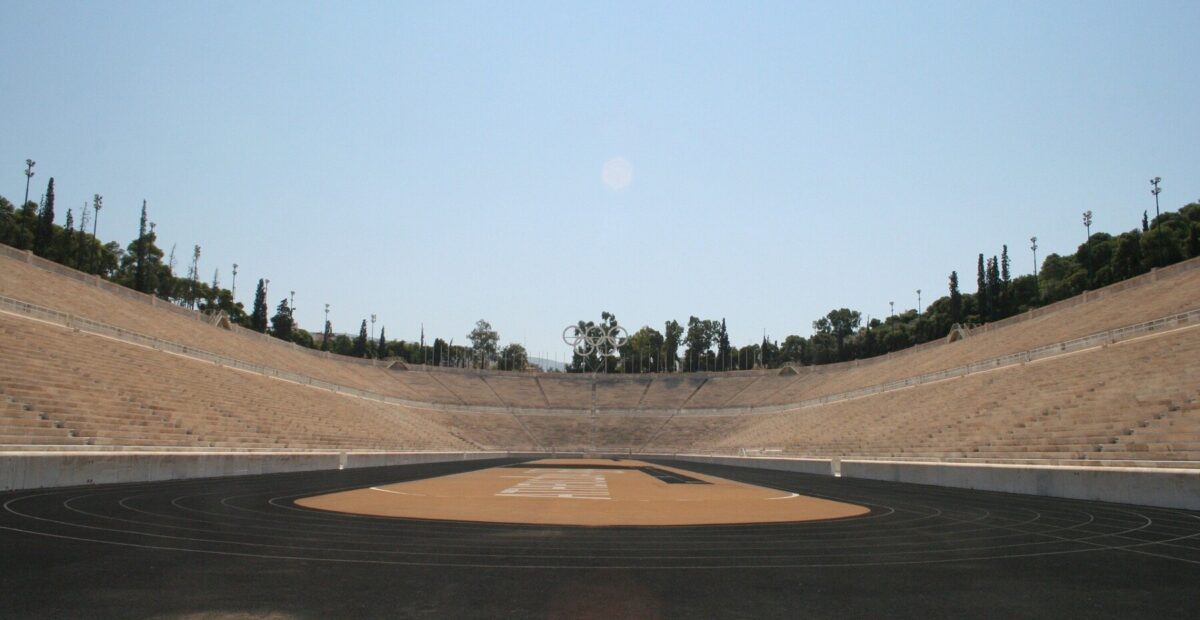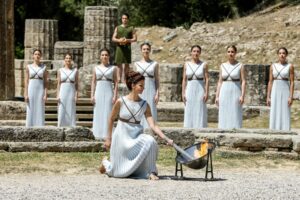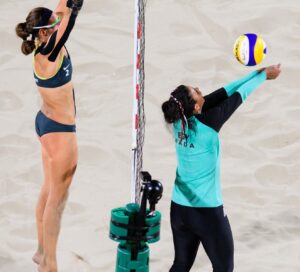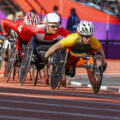
Workshop
The Olympic Games: the event that writes history

How did the Olympic Games come about and how is their original purpose actualized today? From ancient Greece, an event that aims to unite peoples and to deepen the values and universality of sports… and that makes history.
“This is a historic year!”. It’s a phrase that gets repeated every year. Yet, for so many reasons, this year truly is… mostly, thanks to the Tokyo 2020 Olympic Games. And why is that?
Approximately 2800 years ago, this great quadrennial event began in Greece, bringing together athletes from cities such as Athens, Plataea, Sparta and Olympia, among the major polis. The concept surrounding the games was that of a “festival in honour of the gods” in which they practiced the ἐκεχερία, i.e., the Olympic truce or Olympic peace. Its main premise was to pause all the wars and battles that were being fought at that time between peoples. A compulsory premise. The wars were suspended, and athletes could go peacefully to Olympia – a neutral territory – and participate in competitions.
The Games of the modern era did not take this basic premise into consideration until 1991, when, due to the Yugoslav Wars, the International Olympic Committee (IOC) and the United Nations Security Council discussed the need to restore the truce. In 1992, states were pressed to observe that premise… But of course, “observing” did not imply “implementing”. Hence, even today, many states prefer to observe their own interests rather than those of the whole world.
Nevertheless, with each edition, the Olympic Games bring small symbols that bear witness to a work in progress, a peace in the making. At Rio 2016, for example, the Refugee Olympic Team (EOR, “équipe olympique des réfugiés”) participated for the first time, putting this global emergency in the spotlight. At that time, the team consisted of 10 athletes, from Ethiopia, South Sudan, Syria and the Democratic Republic of Congo. This year there are 29 athletes on the team, they come from 11 countries, trained in 13 host countries and represent 12 different disciplines. As seen during the opening ceremony, they paraded after Greece (which by protocol always parades first, as it is the home of the city where the Olympics were born) under the flag of the Olympic Games.
For more stories about the EOR, we invite you to read this article.
The flame of peace
The Olympic flame meant peace. Every four years a flame capable of stopping wars was lit. That flame, which then burned on the altar of Zeus in honour of the goddess of fire, Hestia, is now known as the “Olympic torch”, and is lit, in the Olympic city, using the rays of the sun and transported to the venue of the Games, where it is kept and extinguished only at the end of the event.

In the modern era, it is usually a sports icon who has the honour of lighting the Olympic cauldron. As was the case, for example, with Muhammad Ali, in Atlanta 1996 or Li Ning, in Beijing 2008. This year, it was the turn of Japanese tennis player Naomi Osaka.
The most symbolic of all the flames, however, was that of the London 2012 Games. The lighting of the Olympic cauldron was not carried out by a famous athlete but by six young people who received the torch and together lit a cauldron that was both original and evocative: it consisted of a set of bronze “petals” that formed a majestic flower. Each petal represented a country, and that grandiose flame was the product of the union of each of them. In short, a flame that symbolically embodied the unity of nations.

Maybe it’s just a brazier, or maybe it’s a… vision.
“Be better, together – For the planet and the people”
This is the slogan proposed by the Tokyo Organizing Committee of the Olympic and Paralympic Games, to highlight the aspect of sustainability. Which is also the key to the design and implementation of everything in these Games.
For example: the 5000 Olympic medals were made from precious metals recovered from disposed cell phones and electronic devices; the podiums are the result of a nationwide collection of plastic items (mostly shampoo and dishwashing liquid bottles); the official uniforms (for organizers and volunteers) are in part made with fabrics obtained from the processing of plastic bottles removed from the sea; the Olympic torch is also made of aluminium recovered from the temporary housing for people affected by the earthquake and tsunami of 2011. The beds are made of recycled cardboard, the furniture in the Olympic village comes from sustainable sources, the vehicles are zero-emission, and the energy that powers everything comes from renewable sources (solar, biomass, and hydropower). All this to prevent a greater environmental impact during this major international event. In addition, the cancellation of the presence of the public and many members of the delegations has greatly favoured the reduction of the number of emissions caused (especially by transportation).
And that’s not all. At the end, efforts will be made to offset the carbon footprint by planting trees, through the Olympic Forest project. ” The project is a contribution to the Great Green Wall initiative, which restores degraded landscapes across Africa’s Sahel region. It will involve planting around 355,000 native trees across approximately 90 villages in Mali and Senegal – host of the Youth Olympic Games Dakar 2026 – and will cover a combined area of around 2,120 hectares,” as explained on the official website.

In this way, the world stops to witness the eternal moments of sport, but also to testify that history can be changed and that, from today onwards, there is no turning back.
Women who break the rules to rewrite them
An unforeseen and unexpected aspect of this edition of the Olympics concerns the women, the female athletes, who are silently making strong statements against sexism. For example, the German women’s gymnastics team showed up at the Tokyo Olympics qualifications wearing an ankle-length full body suit, with the stated purpose to put a stop to the “sexualization of gymnastics”. And so, it will be for all the Games. No more bodysuits cropped like a bikini but full-length suits.
During the Euro 2021, the women’s beach handball team had decided not to wear bikini bottoms but shorts during the tournament. The International Handball Federation had forced them to pay a fine of 150 euros each, for a total of 1500 euros. “It’s not appropriate clothing for the activity when they are playing in the sand”, Norwegian Handball Federation President Kåre Geir Lio commented to NBC News. But even the world today is on their side, as the popstar P!nk, has offered to pay the fine for them.
I’m VERY proud of the Norwegian female beach handball team FOR PROTESTING THE VERY SEXIST RULES ABOUT THEIR “uniform”. The European handball federation SHOULD BE FINED FOR SEXISM. Good on ya, ladies. I’ll be happy to pay your fines for you. Keep it up.
— P!nk (@Pink) July 25, 2021
Female athletes cannot be deprived of the freedom to wear clothing that is non-sexist and more comfortable for them. Today, wearing a full-length suit for religious beliefs is respected – or, at least, accepted by regulation – but wearing it for different reasons is questioned. If the Egyptian beach volleyball team can comfortably wear a different outfit (for religious reasons), why can’t the other female handball players pick an outfit that allows them to play more comfortably?

Sometimes it takes courage to break the rules to rewrite them.
Sports, a universal language
To conclude, one last personal reflection that touches the author of this article as a sports enthusiast…
Sport is probably the most universal language that exists in the world. It is perhaps the only language in which such diverse and paradigmatically different cultures can understand each other well. Think of two “distant” countries, such as China and the United States. The customs, politics, and traditions of the two countries are diametrically different. However, the codes between a Chinese athlete and a U.S. athlete, while performing their discipline, are the same. It is also likely that when they compete, they think similar things, act in similar ways, and most importantly – and this is a fact – use the same technique.
Sport is like this.
Muslim tennis player Sania Mirza (India) and Jewish Shahar Peer (Israel) probably see the world from different perspectives… but when they’re on the tennis court, they make the same moves, count points the same way and learn the same strokes to hit the same ball. And in the end, they know they should greet each other with respect. Sometimes they do it even with pleasure! And in fact, they are friends, thanks to sports…
And they understand all of this without a doubt because, in the end, the tennis ball (and any other sport) is the same everywhere.






